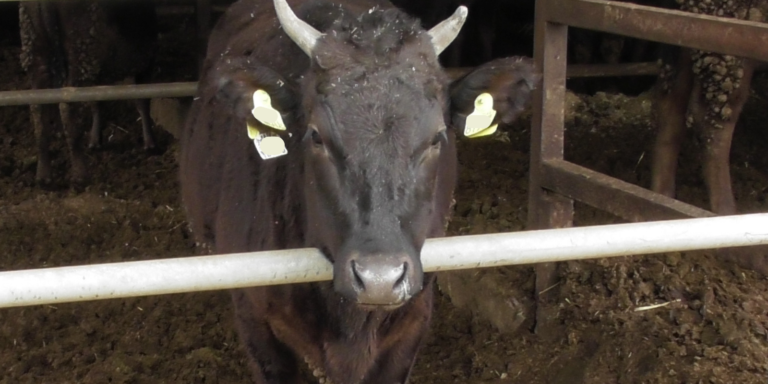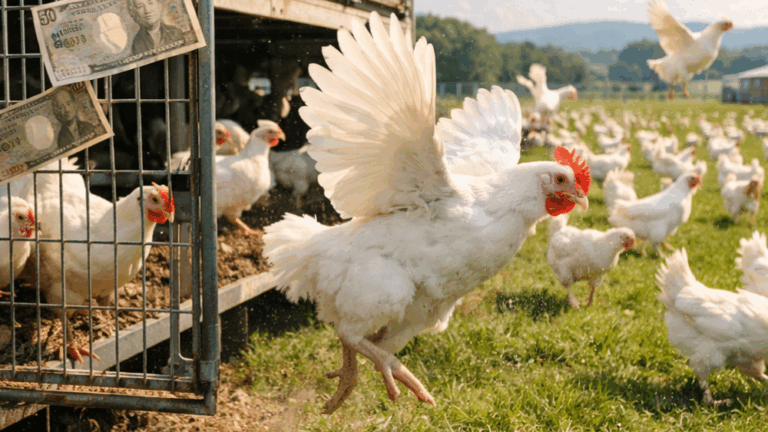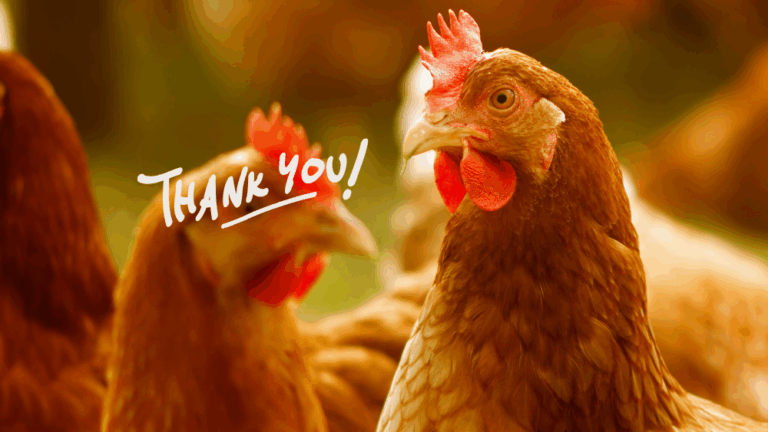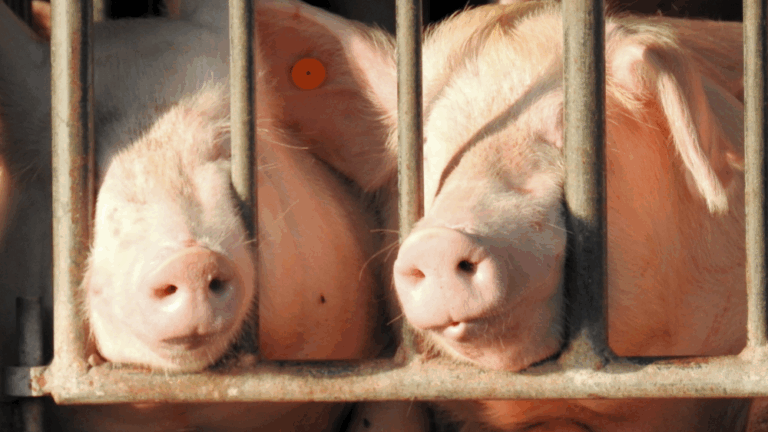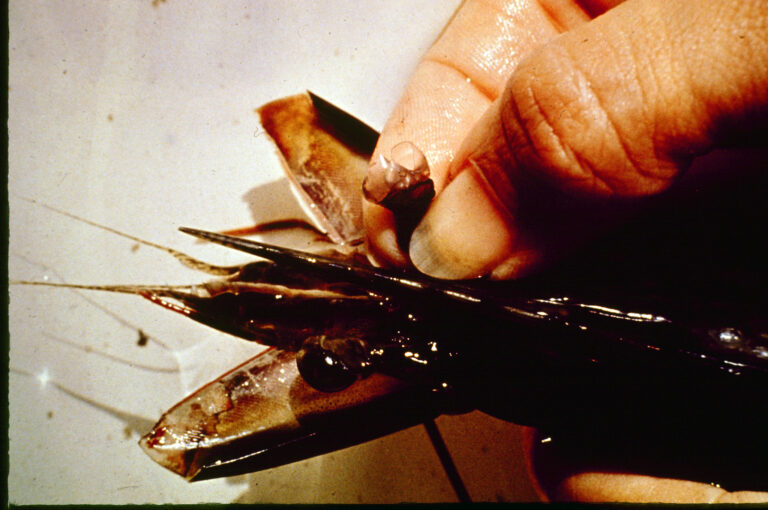On June 1, 2023, during a questioning of a witness at a meeting of the Agriculture, Forestry and Fisheries Committee, Councilor Noriko Ishigaki asked, “Is there an animal welfare problem with marbled beef?” In response to this question, Mr. Shinmura, who was invited as an expert on animal welfare, answered that there is no animal welfare issue, saying that the cattle should be raised properly and that it is a genetic factor.
This is incorrect.
There are a number of animal welfare issues associated with the farming practices conducted to produce marbled meat.
How is marbled meat produced?
It depends on limiting the intake of vitamin A, which is an essential nutrient for animals, and feeding them large amounts of concentrated feed at certain times of their lives, and not allowing them to exercise for much of their lives. Vitamin A is restricted during the middle period of their life, which is about 28 months, and at the same time they are fed large amounts of concentrate feed and limited amounts of roughage such as grass and straw.
Even Wagyu cattle, if they live their entire lives on pasture and eat grass, which is their natural diet, they will not become A5 grade marbled, with fat intermingled with muscle, unless they are sick. If cattle are raised on grass-fed pasture all their lives, they will be what is called “grass-fed,” or healthy.
Vitamin A is an essential nutrient for animals, and it is said that when this is restricted, the marbling goes deeper.
And essential to the creation of marbling is grain feed. Cattle are grass-eating animals by nature. This means that the nutrients they need are not from concentrate feed but from roughage such as grass and straw. They obtain these nutrients by rumination, utilizing their four-chambered stomach.However, they are often excessively fed with grain feed, leading to overnutrition. The specific farming practices right before slaughter have less impact, but it is said that fat is accumulated in the muscles depending on how much grain feed is fed during the fattening period, which begins after 12 months and lasts for about a year.
Restricted roughage also adds to vitamin A deficiency. Mineral deficiencies can also occur if roughage is not available and the animals are not grazed in a natural environment.
Marbling is not genetic.
Wagyu cattle are said to be “easily marbled” due to the characteristics of the breed, but Angus cattle (purebred) and other cattle can also be marbled. Studies have shown that Wagyu crossbreds are not affected by marbling, but the marbling is larger in some areas. In any case, these are the results of grain feeding, and while there are genetic factors that make cattle more prone to marbling through the consumption of unnatural feed, it can be said that marbling is not a purely genetic trait.
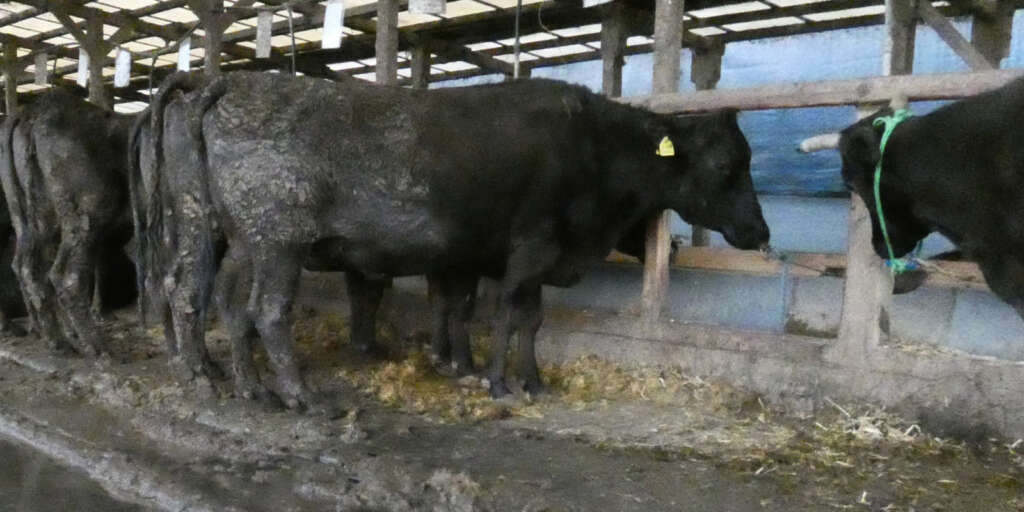
Animals’ Suffering 1: Blindness
Vitamin A is a must-have nutrient for animals. Lack of vitamin A has a variety of negative effects on the body, including normal immune function, eye development, and vision. One of the most noticeable lifelong effects in cattle is the loss of vision and, in the worst cases, blindness.
Animal Suffering 2: Pneumonia
Vitamin A deficiency also leads to immunodeficiency, making them more susceptible to infections. Respiratory diseases are the most common cause of death and disease in beef cattle, with pneumonia being the most common, and bacterial pneumonia being the most common cause. This is why some cattle die.
Animal Suffering 3: Enteritis
They also suffer from enteritis. The most common of these is infectious enteritis. Of course, infection is not just a matter of vitamin A restriction or mineral deficiency due to poor roughage, but can also be caused by a variety of factors, such as a deteriorating environment, increased stress, or weakness due to other illnesses. Still, there is no doubt that immune-depleting nutritional restrictions and excessive grain feeding are one factor.
Animals’ Suffering 4: Heart Failure
One of the increasing causes of death in beef cattle is heart failure. This can be attributed, at least in part,to the feeding method itself, which is to feed as much high-energy, high-protein grain feed as possible.
Vitamin A plays a role in infection control by protecting mucous membranes and preventing oxidation caused by reactive oxygen species in the body. Reactive oxygen species (ROS) inhibit bacterial infection control and immune cell adhesion. Vitamins A, C, E, zinc, copper, and selenium have antioxidant effects in the body. The increase in the mortality rate of feedlot cattle due to bacterial pneumonia and heart failure seems to coincide with the widespread use of vitamin A-controlled feeding.
Nutrition and Infectious Diseases in Fattening Cattle: Exploring the Relationship between Nutritional Management and Immunity – Nobuhiro Kimura, Professor Emeritus of the Kimura Livestock Production Technician Office and Nippon Veterinary and Life Science University
Animal Suffering 5: Poor Environment
Although the circumstances are such that even without specifically aiming for marbling, it does not change the fact that the animals are raised under conditions of low animal welfare. Additionally, for marbling, they are restricted from exercise at least until a few months before slaughter.
There are a few cases where cattle are allowed to graze for a few months before slaughter, such as marbled cattle from Australia and a small percentage of cattle in Japan. However, the general method of raising cattle is basically to keep a few large black cattle in a small enclosure. They are not allowed to get proper exercise and have nothing to do, and they are prone to tongue-rolling, an abnormal behavior in which the cows keep moving their tongues. In some cases, they are kept one cow at a time, and in other disastrous cases, they are kept tethered with nose collars or collars.
In many farms, we see that the hoofs continue to grow because they are in a small stalls and unable to roam around, but they are not trimmed and have grown to an inappropriate state. This applies not only to marbling-related issues but is a common reality in beef cattle farming. Unlike dairy cows that require daily milking, beef cattle require minimal attention. The ground conditions are often soiled with manure as well.
Thus, marbled cattle present numerous animal welfare challenges. While this may seem better than cage keeping or gestation stall keeping where the animals are not allowed to change direction at all, it is hardly appropriate when both physical and emotional pain are involved.
Animal welfare considerations and issues differ from animal to animal, and it is possible that there are things that one may not know about species outside of their expertise. We think, as a responsibility of the witness called to the Diet, it was appropriate to answer that he does not know due to being outside of their area of expertise, rather than providing an uninformed response. In another question, another witness answered about the harmful effects of limiting vitamin A intake. It is a relief at least. I hope the Diet members didn’t get the wrong idea and knowledge.
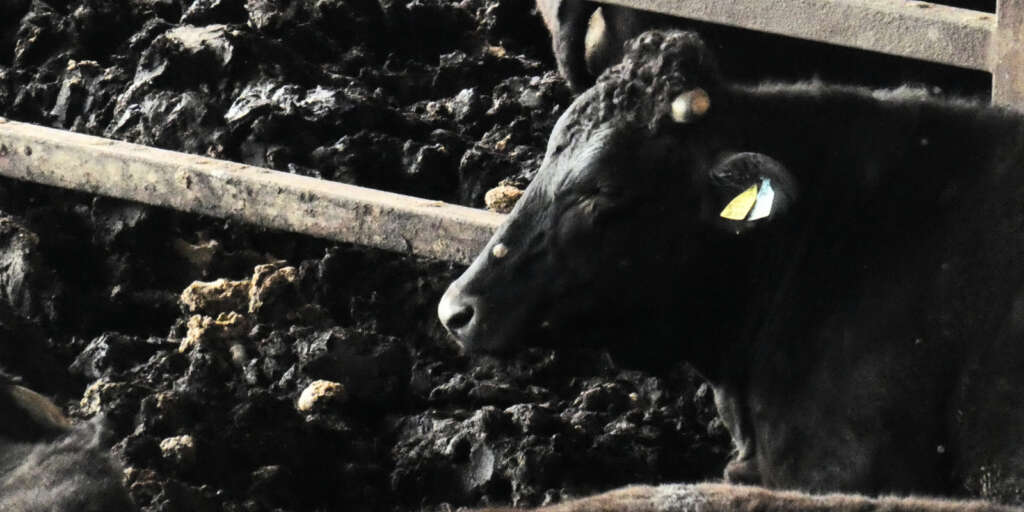
Reference
referencehttps://patents.google.com/patent/JP2004113216A/ja
https://www.jataff.or.jp/project/kourou/files/h28/28-1.pdf
http://jlta.lin.gr.jp/report/detail/pdf/kokunai_h016-1520.pdf
https://www.naro.go.jp/project/results/laboratory/karc/1999/konarc99-185.html
https://www.akitakeizai.or.jp/journal/data/202010_zuisou.pdf
https://www.pref.nara.jp/secure/34382/vitaminamituoka.pdf
https://agriknowledge.affrc.go.jp/RN/2010832952.pdf
https://www.ibatiku.jp/?page_id=1469
https://www.sciencedirect.com/science/article/pii/S0022030246925246
https://www.sciencedirect.com/science/article/pii/S0022030247923874
https://naldc.nal.usda.gov/download/IND43893902/pdf
https://extension.missouri.edu/publications/g2058
https://www.jica.go.jp/jica-ri/IFIC_and_JBICI-Studies/jica-ri/publication/archives/jica/field/pdf/2003_05e.pdf
https://lpi.oregonstate.edu/jp/mic/%E3%83%93%E3%82%BF%E3%83%9F%E3%83%B3/%E3%83%93%E3%82%BF%E3%83%9F%E3%83%B3A
https://prtimes.jp/main/html/rd/p/000000001.000117203.html
https://www.hopeforanimals.org/cattle/268/
https://www.ncbi.nlm.nih.gov/pmc/articles/PMC6039323/
http://kachikukansen.org/kaiho2/PDF/1-2-059.pdf


